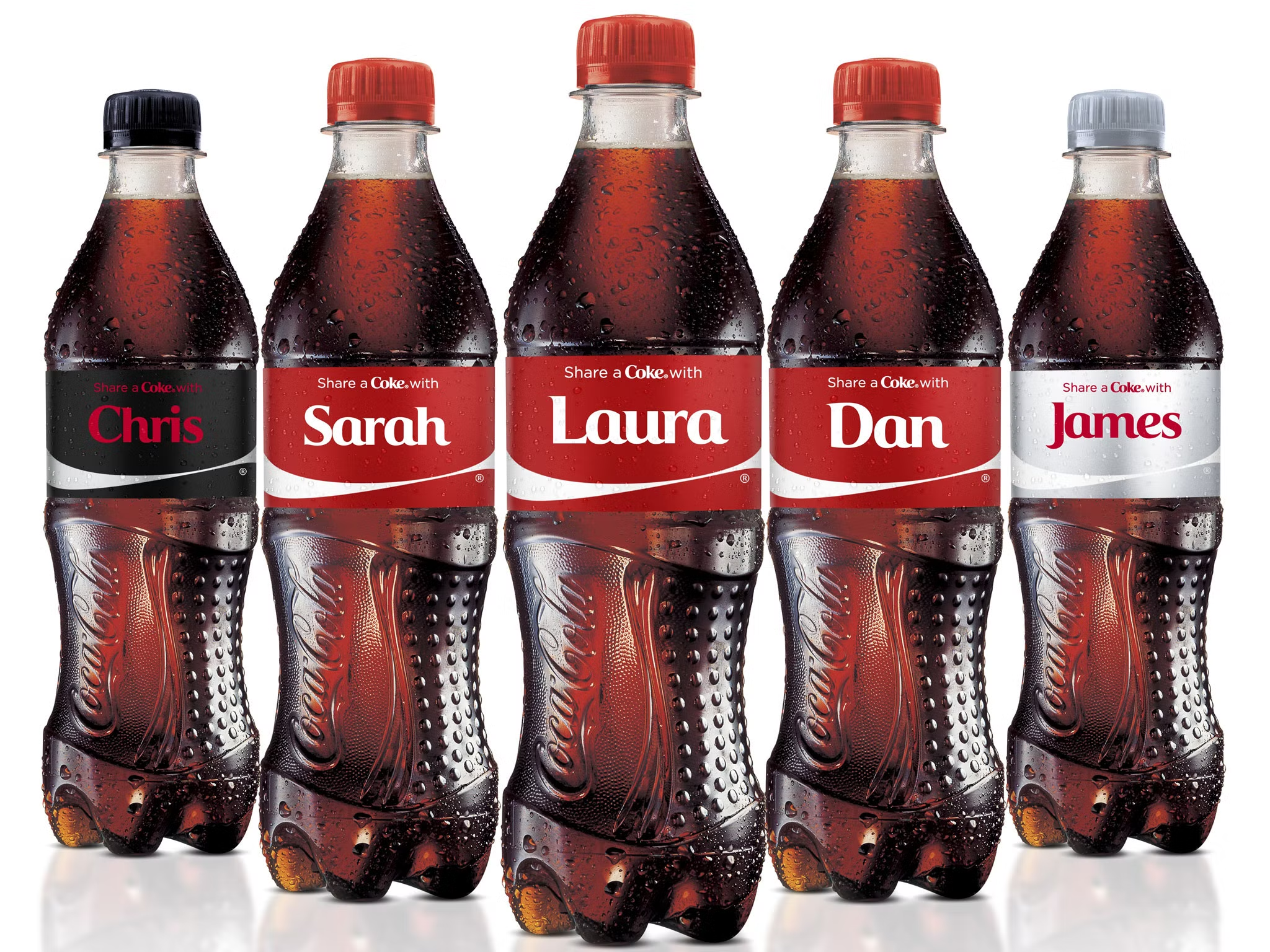Product localization is one of the first marketing strategies you need to nail when expanding into international markets.
Effective product localization can mean all the difference between a successful and unsuccessful market entry.
This article covers product localization – what it is, why it’s necessary, how to get started, key steps, and essential but non-obvious things to consider in the process.
What is product localization?
Product localization is the process of adapting your product to the target market’s requirements, peculiarities, trends, and traditions.
It considers cultural, political, religious, and other specifics so your product naturally fits and customers can connect to it. Product localization helps you expand globally and sell your product to a specific market’s target audience. You customize the product for the customers instead of asking the customers to accept it as it is. This marketing strategy is a huge customer experience champion.
Why is product localization important?
Product localization is essential for everyone planning to expand to a new market, be it a country or a region with its specifics.
Suppose you have a mobile app that only supports English. Some might say it’s sufficient because English is spoken worldwide, so where’s the problem? But many of your customers will probably have difficulty using an app that isn’t localized in their native language.
More than 80% of non-English speaking users don’t even bother using an app or website that isn’t translated into their language. More than 70% of users said they’d most likely use an app or service translated into their language. These numbers are something to reckon with.
Product localization is more complex than normal translation. Of course, translating the text is essential, but your product probably contains visual elements such as icons, different colors, images, or even videos. Ideally, these items should also be customized for the target market by someone who understands the regional specifics.
While certain images may look appealing in your country, they may be considered strange, provocative, and inappropriate in some other countries. Certain colors and gestures can also have different meanings.
Properly localizing product logos, slogans, and advertising campaigns is crucial as it can lead to various not-so-funny outcomes. A classic example of localization done right is how Starbucks customized its branding for specific countries. Their logo wasn’t appropriate in certain countries. So, they replaced it with a crown and a star – a simple but very important step.

Source: Reddit
Another good example is the Starbucks coffee shop in the old town of Kyoto, Japan. They rented an old wooden building, and to ensure it would fit into the local environment, they decided not to use a trademark green paint. Instead, they painted the logo brown so it wouldn’t stand out too much.

Source: YouTube image
Clever, isn’t it?
Product localization vs. internationalization
If you’ve heard “internationalization” or simply “i18n,” you might wonder how it differs from localization. These terms have different meanings and shouldn’t be used interchangeably.
While localization is about customizing a product for the target region, internationalization is mostly related to software and means preparing your app for translation. In fact, internationalization in software development enables localization.
Normally, hard-coded strings need to be extracted into separate translation files to ensure the app can display characters from different alphabets, support both left-to-right and right-to-left languages, and so on.
So developers typically perform internationalization. Linguists, in turn, conduct localization, and i18n follows.
Product localization benefits
Here are some key benefits of product localization:
- Time to market: Get your product to market as quickly as possible and drive more sales. However, localization shouldn’t be an afterthought. Ideally, you should develop a product with localization in mind.
- Easier product expansion: Expanding into new markets becomes much easier when your product is localization-ready. At the same time, existing customers will not be affected as the core product remains unchanged.
- Expanded customer base: People are more likely to use the product if translated into their native language. Proper localization helps expand the customer base.
- Happier customers: Happy customers typically know how to use and connect with your product. They’re also more likely to keep buying from you and recommend you to their friends and family.
How to implement product localization
Below are the main steps involved in preparing and implementing product localization.
1. Gather your team
First, decide who will implement localization. A popular choice is to pay a localization service provider (LSP) – essentially a translation agency – to do most of the work for you.
LSP assesses your requirements, researches the product and target market, makes key recommendations, and translates the content. If you have enough funds to cover the localization campaign and don’t want to deal with all the details yourself, this is probably your best bet.
When working with an LSP isn’t an option, you need a solid in-house team to deliver localization. At least the following roles should be filled:
- Localization project manager: A project manager implements localization at a tactical level, oversees the process from start to finish, and coordinates the team’s efforts.
- Translators: You need someone who does the translation. If you don’t have in-house translators, hire freelancers. Ideally, you should find people who specialize in the target market and know its ins and outs.
- Designers: Designers help localize visual assets, packages, interfaces, and other elements.
- Developers: If you’re localizing software, you need developers to do the job.
- Quality assurance engineers: These engineers ensure the product looks and works as expected. This role is critical when localizing software and conducting localization testing.
- Localization engineer: When localizing complex software products, you need dedicated technicians facilitating the entire process. A localization engineer connects all team members, including developers, managers, designers, and translators.
2. Research the target audience
Okay, at this point, your dream team is assembled and ready to go. In the next step, you research the target market you’re translating for, keeping cultural characteristics in mind.
Your team should decide which languages to translate into. While it sounds like an obvious and easy thing to do, sometimes it’s not that simple. Some countries have dozens or even hundreds of languages.
More than 800 languages are spoken in Papua New Guinea; you probably can’t afford to support them all. You should identify your core audience, pick 1-3 of the most popular languages for that audience and focus on translating them.
If your product is related to gambling, smoking, or alcohol, it’s also important to ensure you’re not breaking local laws. For example, some European countries prohibit the sale of alcohol to anyone under the age of 18, while in Japan and some other countries, the minimum age is 21. Some countries also introduce smoking bans and prohibit the sale of cigarettes to those born after a certain year.
3. Decide on the strategy
The localization strategy defines the overall plan for adapting your product to new countries. Here are a few possible approaches.
- Waterfall: A classic approach where you start the localization process after the product is complete; typically used when localizing non-software products.
- Agile: This approach is more complex and used when building complex software. In this case, the development and localization processes are carried out simultaneously, resulting in greater efficiency and flexibility. It’s especially relevant if you frequently deploy product updates.
- Continuous localization: This approach is a subset of the agile methodology. In this case, localization becomes an integral business process. The software is ready for release anytime during the development cycle, resulting in even faster releases. This is the most complex strategy to implement as it requires using additional tools (like automation and webhooks), but at the same time, the benefits are significant.
4. Choose the right tools
After the team is assembled and the strategy selected, decide on the right tools to carry out the process. You most likely need software to easily import and export translations, track the whole translation process, monitor what your translators are doing, create new tasks for them, and perform quality assurance.
In more complex cases, you may need to integrate third-party services to facilitate content sharing, such as uploading and downloading texts from your WordPress website or GitHub repository.
Of course, you can create an in-house tool tailored to your needs, and it might be a good solution, provided you have the budget and time. If you can’t afford to spend time building custom software, consider a translation management system (TMS) to do the heavy lifting.
A TMS is an all-in-one solution that solves key translation challenges: it allows for managing texts, assigning tasks to translators and other contributors, quality assurance, integration with third-party services, and more.
A modern TMS usually comes with the following add-ons:
- A glossary so the translation is consistent
- A translation memory so you don’t translate similar texts over and over again
- The ability to use machine translation, hire professional linguists, and even use artificial intelligence to improve the translation process
You might ask: why don’t we use machine translation (MT) or AI instead of hiring translators? While this can be a viable solution that reduces translation costs, it has some potential downsides.
The final quality may not be ideal for important texts with high visibility. Even if the translation is technically correct, it may sound bizarre or wouldn’t convey the right message. Hiring a specialist to translate slogans, key marketing materials, your website’s main pages, and similar content is recommended.
At the very least, a linguist should check machine translations to eliminate unexpected problems. Sometimes MT engines can corrupt text formatting and markup if your text contains HTML tags. So the bottom line: Use MT sparingly and pay attention to quality assurance.
If you’re translating a mobile application, you can also benefit from the over-the-air (OTA) capability many translation management systems offer. Over-the-air allows you to deliver new translations directly to the end users without re-publishing the app to the App or Google Store, which usually takes some time.
For example, if you just released a new app version and then notice a small typo on one of the screens, you don’t need to create and publish a new version: you can make the necessary adjustments and distribute the updated version text to your customers. Pretty handy, right?
5. Start with internationalization
Internalization is key to localizing your software product and precedes localization. It typically includes the following activities:
- Extracting hard-coded texts into separate translation files. Ideally, the source code shouldn’t directly contain text in English or any other language. Special placeholders, also called translation keys, replace the original text when translating. When the app is deployed to the end user, the translation values automatically replace the keys based on the language settings. The values, in turn, are stored in separate translation files. You can send these files to translators to work with directly or through a translation management system. After all, you probably don’t want translators to change your source code.
- Localizing visual elements. Your images, videos, and other visuals should also be easily interchangeable so you can localize them.
- Making your app Unicode-comptaible. In addition to Latin, it should also display Cyrillic characters, hieroglyphs, and Arabic letters.
- Improving software to support right-to-left languages. Certain languages can be more verbose and take up more space, so the design should be flexible enough to accommodate them. For example, sentences in German are generally 15-30% longer than in English.
- Localizing the date and time. The date/time format can vary from country to country. This also applies to currencies and units of measurement.
6. Localize your product and other assets
This is where your translators come in. Before assigning them tasks, ask yourself exactly what you want to localize.
- Application screens and website pages: User interface (UI) and user experience (UX) are the first to be localized, especially if your product is software. Be sure to translate text elements, localize dates, times, currencies, units of measure, etc. If it’s a physical product but your company has a website, adding support for the target language is still recommended.
- Videos, banners, and other visual elements: Localizing visual elements is a complex task as image source files may not be available (which means everything has to be drawn from scratch). Adding video subtitles or voiceovers is also time-consuming and potentially expensive. Luckily, you can take advantage of generative AI-powered speech and subtitle generation.
- Physical product localization: Take extra care when localizing a physical product containing controls, buttons, sensors, and other hardware. Make it easy for your new customer base to use the product. Another important process is technical localization. An example is changing the plug type on an electrical product to ensure compatibility with the electrical connectors.
- Packaging localization: When selling physical items, proper packaging is critical. Of course, it depends on how well-known your brand is (you might not want to change much), but something to consider.
- Price and payment: Offer customers a convenient way to pay for the product through channels they know and have experience with. While credit cards are becoming more common, people in certain countries may prefer to use invoices and local payment services.
- Marketing materials and customer emails: To localize your marketing assets to the target region, you may need translation software that offers translation, drafting, and copywriting. You take existing material, and instead of translating it word for word, turn it into something that conveys the same message but has cultural references more relevant to the target market.
- Documentation: You need extensive documentation to localize complex products and translate the documentation for the target market to reduce the number of support cases.
- Support assistance: Customer support in multiple languages can be tricky, but modern tech saves the day. Some translation management systems integrate with tools like Intercom and Zendesk to automatically translate incoming and outgoing messages. Even if your support doesn’t speak a language, all messages are automatically translated, which is handy.
- Social networks: Consider creating a dedicated account on major social networks, especially if they’re one of the main funnels for attracting new customers.
7. Perform localization testing
After the initial localization, test everything and ensure nothing falls through the cracks. Here are the tests you can perform.
- Localization quality assurance: Translators and editors ensure grammatical correctness and editorial consistency, keeping the translations accurate, high-quality, and striking the right tone.
- Functionality quality assurance: Specialists ensure the product is free of defects and that nothing affects its performance.
- Visual quality assurance: Designers and specialists check visual elements for adequate and correct rendering. This ensures no character encoding issues; text fits within the space allotted, no content is clipped, and so on.
- Compliance quality assurance: In some cases, it’s necessary that the product meets all requirements and complies with the laws of the target market (e.g., GDPR).
8. Measure performance
After your product has been localized and distributed to a new market, you’ll want to evaluate its performance to understand localization’s impact. Of course, metrics can vary by product type, but here are some common ones to measure:
- Does your market share increase after localization?
- Have the exchange rates changed? Also, make sure to monitor SEO keyword rankings.
- Has the number of sales in the target region changed?
- How many page views (read articles, video views, etc.) do you have from the target region? If implemented correctly, you’ll see increased traffic from the target market.
- How has social media engagement changed among the target audience?
- Has the number of customer support requests changed? Localizing your product and knowledge base will likely decrease support cases from the localized regions.
Product localization examples
What does successful product localization look like? Let’s learn from some examples.
Coca-Cola’s Share a Coke campaign
The core idea of this campaign was simple yet clever. Coco-Cola picked out around 250 popular names in each target region and put them on their cans and bottles. Although it was a major packaging change, it delivered impressive results as people rushed to the stores to find their friends’ names and buy Cokes as gifts. This campaign was so successful that Coca-Cola decided to expand it to even more markets.

Source: The Independent
Netflix’s global expansion
A lot of localization went into Netflix’s global expansion, which helped it produce impressive results. In addition to sourcing high-quality user interfaces and translating subtitles, it partnered with local production companies and created “originals” to attract local viewers.
Netflix also partnered with local payment providers to simplify the subscription-buying process. While it had to invest heavily in these campaigns and faced some challenges, it’s now active in 190 countries with more than 150 million viewers today.
H&M and the marketing videos
H&M localized its marketing videos to different target regions to engage potential customers. For example, the video below was produced specifically for the Netherlands. It was shot on location with a Dutch voice actor. The result? Well, it couldn’t be any better.
Source: YouTube
PlayerUnknown’s Battlegrounds (PUBG)
As a popular online multiplayer game across gaming platforms, PUBG built quite an impressive player base (400 million people) worldwide by translating the game, assets, and help materials into 17 languages. They also dealt with the cultural aspects of certain countries.
In China, for example, they decided to reduce violent graphics and imagery after the local government expressed its concerns and even included references to socialist views. Strategic localization made the game quite popular among local players.
Know where to start but also where to stop
So far, you’ve covered product localization, its importance, and how to implement it. You’ve also gone through the critical implementation steps for your product and examples of successful localization efforts. While localization isn’t exactly easy, you can reap many benefits if you’re strategic and resourceful with the process.
From translation management and computer-assisted translation, discover the latest trends in localization software.

